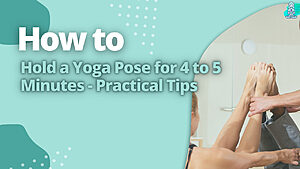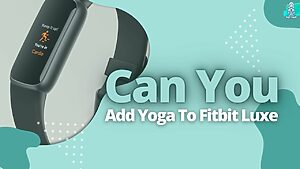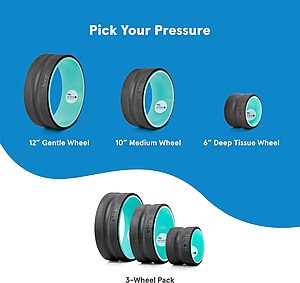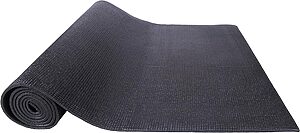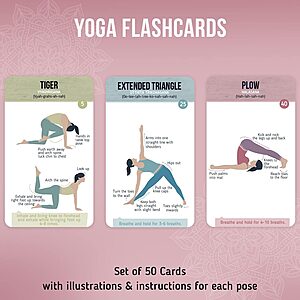Yoga is excellent for many things. For example, it can help you build muscle, lose weight, or become more flexible. But is it possible that yoga could help you improve your chances of getting pregnant?
In this article, we’re going to talk about yoga. But, first, we’ll talk about what yoga is, where it came from, and how it works.
Then we’ll talk about whether or not yoga can help you. And we’ll give you a few simple yoga poses that could help you with fertility.

Here’s The Answer To Is Yoga Good For Fertility
The benefits of yoga for fertility largely depend on the individual. However, there are a few different ways that yoga may be helpful for those trying to conceive. First, yoga can help to improve reproductive health.
The practice can help improve circulation and massage the reproductive organs, improving fertility. Yoga can also aid in lowering stress, which can significantly impact fertility.
No one type of yoga is best for fertility. Some people may find a more vigorous form of yoga helpful, while others may prefer simple poses. It’s crucial to find a yoga style that suits you and that you enjoy.
Yoga classes specifically for fertility are becoming more popular. These classes often focus on poses that are helpful for those trying to conceive. They may also guide nutrition and other factors that can impact fertility.
If you consider yoga for fertility, you must speak with your doctor first. Yoga is generally safe, but some poses may not be appropriate for those with certain medical conditions.
Does Yoga Increase Fertility?
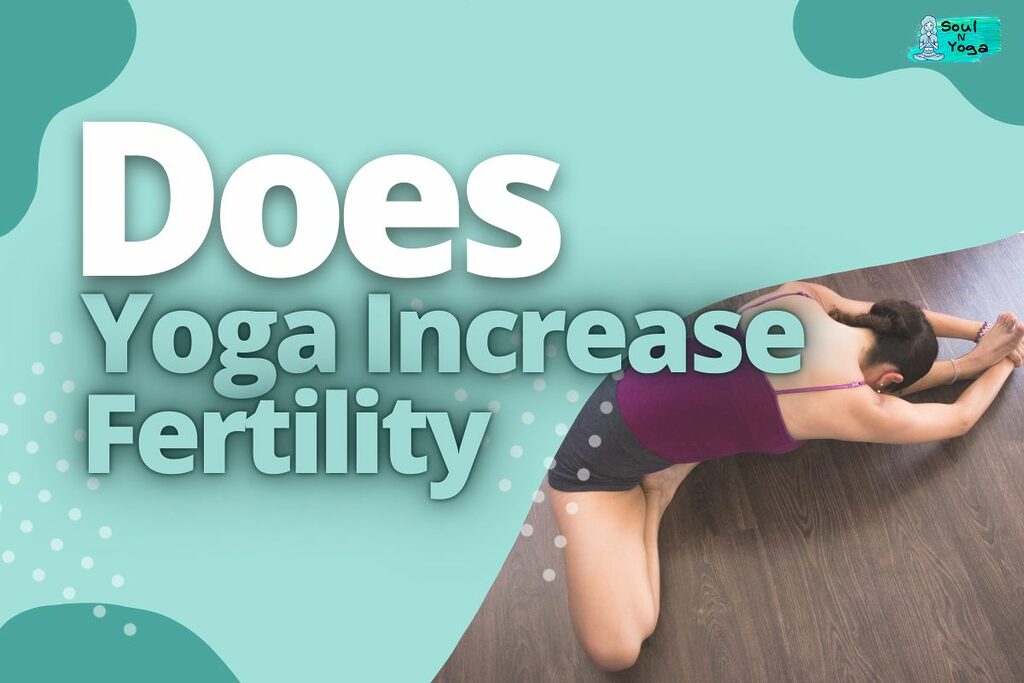
Yoga may seem like a wonderful way to unwind and relax, but it may do more than improve your mood. Some research suggests that yoga could improve fertility.
This isn’t necessarily surprising because many people think about the physical benefits of practicing yoga, such as improved flexibility, balance, and strength, but there are mental health benefits too.
For example, regular practice of yoga may reduce anxiety and depression. There’s no research showing a link between yoga and fertility, but plenty of studies suggest that yoga helps relieve stress and improve mood.
Studies show that yoga reduces stress hormones like cortisol and increases oxytocin, which plays an essential role in helping us relax and fall asleep.
What Are the Advantages of Practicing Yoga When Trying to Conceive?
Yoga is one of those things that people either love or hate. You might think it looks like some weird martial arts routine if you’ve never tried it.
However, if you give it a shot, you’ll find that it’s a delightfully calming exercise that also improves balance and flexibility while strengthening and stretching the body. And it’s been shown to reduce stress levels and increase blood flow throughout the body.
The best thing about yoga is how little equipment is needed, just a mat, a few blocks, a strap or belt, and perhaps a towel to keep you warm to practice it. You don’t even need a teacher; you can learn how to do basic poses online.
So anyone trying to get active during pregnancy should consider yoga, whether they want to work up a sweat or unwind.
Body Strengthening
Yoga is one of those things that people either love or hate. Some see it as relaxing, while others find it too difficult or tedious. However you feel about it, consistent yoga practice has a lot of advantages.
As a form of meditation, yoga helps improve focus and concentration, reduces stress levels, improves sleep quality, boosts energy, and strengthens the body.
Yoga also encourages balance and coordination, helping prevent falls and injuries. Exercise is another critical component of any successful weight loss plan.
While cardio exercises like running are great for burning calories, they can lead to overuse injuries such as shin splints, plantar fasciitis, and knee pain.
Reduces Anxiety, Depression, and Stress

Incorporating yoga and mindfulness exercises into your routine may help you lower your body’s serum levels of cortisol, a hormone that increases during times of stress.
- Cortisol can cause inflammation, which affects many chronic diseases, including obesity, heart disease, diabetes, cancer, and arthritis. A 2013 study found that practicing yoga daily for eight weeks could decrease cortisol levels by up to 7 per cent.
- A study at the University of California San Francisco Medical Center looked at how yoga affects patients with fibromyalgia. Researchers recruited 60 women with fibromyalgia and randomly assigned them to either a 10-week program of Iyengar Yoga or a control group. Both groups received instruction on stretching and strengthening exercises.
- At baseline and again at week 10, participants completed questionnaires about pain, sleep quality, fatigue, mood, and physical and mental health. They also had blood tests taken to measure their cortisol levels.
After ten weeks, researchers found that those who practiced yoga experienced significant improvements in their symptoms of depression, anxiety, and insomnia. They also reported less pain and improved sleep. In addition, participants’ cortisol levels dropped by nearly 40 per cent.
Hormone Balancing
Addressing your hormone levels is the best method to enhance your sexual life. Hormone imbalance affects many aspects of our lives, including sleep, weight gain, mood swings, energy levels, and sexual desire.
Women are most likely to experience hormonal imbalances due to fluctuations during menstrual cycles, pregnancy, childbirth, breastfeeding, stress, ageing, diet, lifestyle habits, medications, and medical conditions.
Men are affected by similar factors. However, testosterone production decreases gradually over time. This decline can lead to decreased libido, erectile dysfunction, low energy, poor muscle tone, depression, anxiety, insomnia, memory loss, and cognitive impairment.
HRT (hormone replacement therapy) is one way to help restore some balance. However, it isn’t always effective and can cause side effects like breast tenderness, headaches, nausea, and vaginal bleeding.
Fortunately, there are natural methods you can attempt to boost your sex desire without using drugs naturally.
Aids In The Production of Sperm
The study, published in Human Reproduction Update, found that low sperm count rates are increasing globally. Researchers from the University of California San Diego School of Medicine collaborated with colleagues from India and Australia to conduct the study.
They analyzed data collected from over 50,000 men worldwide, including those from India. Researchers observed that while many factors contribute to low sperm count, one factor that is becoming increasingly prevalent is using certain drugs.
In particular, some antidepressants and anti-anxiety medications can cause temporary or permanent damage to sperm cells.
While more focus on this area needs to be done, the researchers ultimately concluded that yoga could improve male fertility and help prevent infertility.
How Yoga Can Be Beneficial For Conception?
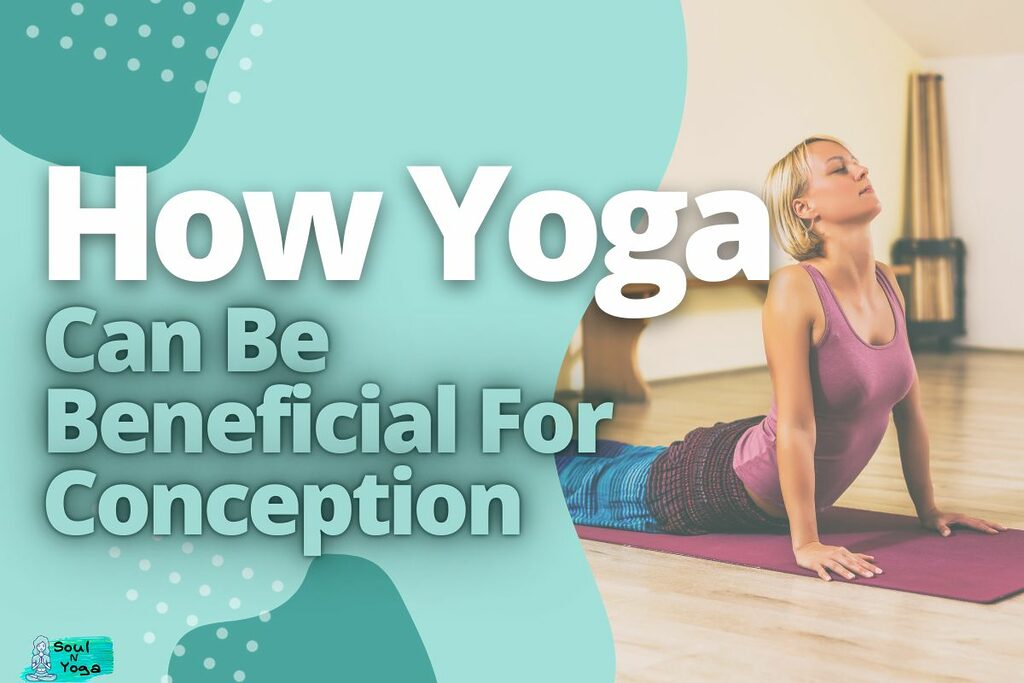
Yoga therapy benefits reproductive function in both men and women by improving the overall physiological system and modulating the neuroendocrine axis.
This improves the overall hormonal balance of the body, which regulates the neurohormonal profile. Stress reduction helps to normalize the hypothalamic pituitary adrenal axis, reducing cortisol and increasing progesterone.
“Fertility yoga aims to improve awareness of one’s emotional state and to develop strategies to manage stressful situations. Yoga teaches us to focus our attention inwardly and to control our thoughts and emotions.”
Postures In Yoga That Increase Fertility
Different postures or asanas may be recommended for different people, depending on the individual’s body type and specific fertility issues. However, some general principles may be helpful for many people struggling with infertility.
One of the most important things to remember is that yoga aims to relax the body and mind, not to achieve perfect form or to push oneself to the limit. Therefore, focusing on deep breathing and stress relief is essential when practicing yoga for fertility.
Many different yoga poses can be beneficial for fertility. Some of the most common include those focusing on the uterus, pelvis, ovaries, thyroid, and lower back. These poses can help to improve blood flow and increase the chances of ovulation.
Head-to-Knee Forward Bend (Janu Sirsasana)
With your knees 90 degrees bent, sit down on your mat. Put your feet shoulder-width apart on the ground. Your thighs are perpendicular to your torso and parallel to one another.
Arms outstretched in front of you. Reach up toward the ceiling with your palms facing down.
Your head rests on the ground. Keep your neck long and relaxed, looking forward.
You can sit on your mat or stand up. If you decide to stand, make sure your weight is equally distributed between both feet.
Inhale slowly and deeply into your belly. Then, exhale fully and let go of everything inside of you. Let go of tension and stress.
Drop your chin to your chest and glance down as you exhale.
Gently lower yourself onto your hands and knees. This is where you’ll start the pose.
Corpse Pose (Savasana)
Savasana, or relaxation pose, is one of my favorite poses because it helps you release stress and allows you to focus on slowing down and relaxing. If you are feeling stressed out, try doing Savasana at least once a day.
You don’t have to do it lying down; you can sit up straight while practicing it. I like to practice Savasana in the morning, before work, or in the evening, just before bedtime.
By practicing Savasana, we relax those muscles and allow ourselves to feel safe and comfortable. So follow along with me here to learn how to do Savasana:
- Begin by laying flat on your back. Your hands are placed either under your shoulders or behind your head.
- Let your knees fall open and turn your toes slightly inward.
- Bring your attention to your breathing. Notice how your lungs expand and contract as you breathe. Feel free to take deep breaths if you wish.
- Allow your eyes and keep them closed throughout the exercise.
Seated Forward Fold (Paschimottanasana)

The Seated Forward Fold (also known as Paschimottanasana) is one of the most popular yoga poses. This pose helps stretch the hamstrings, calves, and groin muscles. It also improves digestion and breathing.
For safety reasons, ensure your knees are bent slightly, and your feet are flat on the ground. If necessary, use blocks under your hands to keep your wrists straight.
Cobra Pose (Bhujangasana)
Cobra pose elongates and stretches both sides of the spine, increasing circulation to the pelvic organs. In addition, this poses helps release tension in the hips and thighs and improves digestion.
The pose is done lying down, facedown, with arms outstretched over the head. Beginners start with their knees bent 90 degrees and feet together. Keep your heels closer together as you progress and stretch your toes away from each other. You can do this either by standing up or lying down.
Beginners often feel like they are about to fall forward because the weight of their body pulls them toward the ground. To prevent this, contract the abdominal muscles, lift your chest and pull your shoulder blades back.
Place one hand against the wall behind you to ensure you don’t lose balance. If you cannot reach the wall, use something else, such as a chair. Then, raise your torso off the ground while keeping your elbows near your ears.
Holding the pose for five minutes increases oxygen levels in the brain and relaxes the mind.
Conclusion
This blog post discussed the benefits of doing yoga while trying to conceive. We also included information on the benefits of doing yoga in general.
The yoga poses in this blog post are ideal for women who want to improve their fertility. Here are instructions on performing yoga poses that will increase your fertility.
Be sure to check out other blog posts on our website for more information on topics related to health and fitness.
Thanks for reading, and be sure to check back for more posts.
My name is Mugen Seki, and I’m a painter and yoga enthusiast who is passionate about bringing together art and exercise in ways that help people connect with their inner selves. When I’m not painting, I’m practicing yoga. And when I’m not doing either of those things, I’m usually thinking about them.
- How to Hold a Yoga Pose for 4 to 5 Minutes – Practical Tips
- A Guide to Finding the Perfect Yoga Mat for Carpet Floors
- Can You Add Yoga To Fitbit Luxe (Unlock the Power)
- Can You Add Yoga To Garmin Vivoactive (Yoga On The Go)
- Is Aerial Yoga Dangerous (The Scary Truth)
- What Is The Weight Limit For Aerial Yoga (Exploring The Possibilities)


